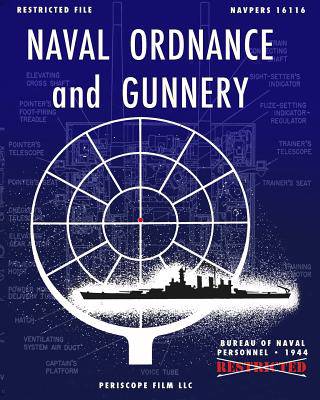
- Afhalen na 1 uur in een winkel met voorraad
- Gratis thuislevering in België vanaf € 30
- Ruim aanbod met 7 miljoen producten
- Afhalen na 1 uur in een winkel met voorraad
- Gratis thuislevering in België vanaf € 30
- Ruim aanbod met 7 miljoen producten
Zoeken
€ 62,45
+ 124 punten
Uitvoering
Omschrijving
Naval Ordnance and Gunnery is the most definitive book to emerge from WWII on the subject of naval ordnance and fire control. Encyclopedic in content, the text runs nearly 600 pages and is richly illustrated with photos and diagrams of systems used on destroyers, cruisers, battleships and other warships. Within its pages you'll find detailed descriptions of weapons and ammunition, and discussions on subjects from gun design and construction, to fire control and trajectory analysis. Individual chapters discuss explosives, ammunition, gun assemblies (including barrels, breech assemblies and mounts), turret installations, semi-automatic guns, machine guns, small arms, torpedoes, depth charges and mines, and a history of fire control. Chapters about the fire control problem include studies of gun sight principles, range measurement, the surface problem, the AA problem, fundamentals of director control, dual-purpose battery fire-control system, main battery fire-control system, machine-gun control, torpedo control, spotting, and organization and communications systems and procedures. The book's easy-to-understand text explains the myriad complex problems affiliated with gunnery, and is an indispensable reference for the historian, docent or modeler intent on understanding how WWII gun crews and systems operated. Work on Naval Ordnance and Gunnery began in 1943 at the request of the U.S. Navy's Bureau of Personnel. A capable team of five officers, working as writers and editors, compiled the book from a wide variety of sources including curriculum documents from the U.S. Naval Academy and Midshipmen's Schools, material from the Bureau of Ordnance, and various publications from the General Motors Corporation (which designed and built many of the 20mm and .50 caliber guns described in the book). Although it was declassified after WWII, it's never been easy to obtain a copy of this text. This high quality reprint includes all the original text, diagrams and photographs from the original 1944 edition.
Specificaties
Betrokkenen
- Auteur(s):
- Uitgeverij:
Inhoud
- Aantal bladzijden:
- 586
- Taal:
- Engels
Eigenschappen
- Productcode (EAN):
- 9781937684228
- Verschijningsdatum:
- 25/05/2013
- Uitvoering:
- Paperback
- Formaat:
- Trade paperback (VS)
- Afmetingen:
- 203 mm x 254 mm
- Gewicht:
- 1147 g

Alleen bij Standaard Boekhandel
+ 124 punten op je klantenkaart van Standaard Boekhandel
Beoordelingen
We publiceren alleen reviews die voldoen aan de voorwaarden voor reviews. Bekijk onze voorwaarden voor reviews.








